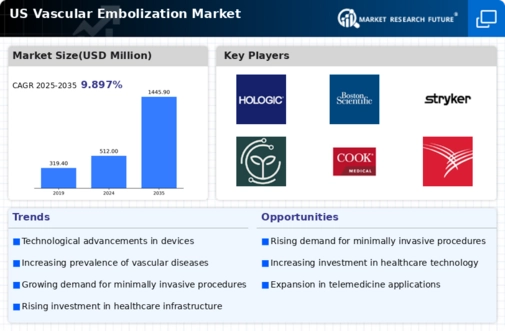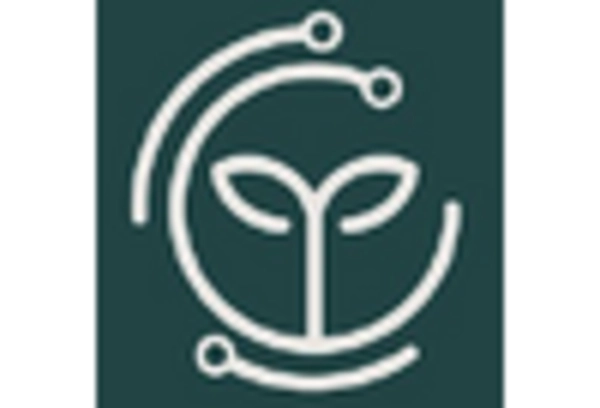The vascular embolization market is characterized by a dynamic competitive landscape, driven by technological advancements and an increasing prevalence of vascular diseases. Key players such as Medtronic (US), Boston Scientific (US), and Johnson & Johnson (US) are at the forefront, leveraging innovation and strategic partnerships to enhance their market positions. Medtronic (US) focuses on developing cutting-edge embolization devices, while Boston Scientific (US) emphasizes expanding its product portfolio through acquisitions and collaborations. Johnson & Johnson (US) appears to be concentrating on integrating digital health solutions into its offerings, thereby enhancing patient outcomes and operational efficiency. Collectively, these strategies contribute to a competitive environment that is increasingly centered around innovation and patient-centric solutions.
In terms of business tactics, companies are localizing manufacturing and optimizing supply chains to enhance responsiveness to market demands. The vascular embolization market is moderately fragmented, with several players vying for market share. However, the influence of major companies is substantial, as they set industry standards and drive technological advancements. This competitive structure allows for a diverse range of products and services, catering to various patient needs and preferences.
In October 2025, Medtronic (US) announced the launch of its latest embolization device, which incorporates advanced imaging technology to improve procedural accuracy. This strategic move is significant as it not only enhances Medtronic's product offerings but also positions the company as a leader in innovation within the market. The integration of imaging technology is likely to attract healthcare providers seeking to improve patient outcomes and procedural efficiency.
In September 2025, Boston Scientific (US) completed the acquisition of a smaller firm specializing in embolization materials, thereby expanding its product range and market reach. This acquisition is indicative of Boston Scientific's strategy to bolster its competitive edge through diversification. By integrating new technologies and products, the company aims to enhance its value proposition to healthcare providers and patients alike.
In August 2025, Johnson & Johnson (US) entered into a partnership with a tech firm to develop AI-driven solutions for embolization procedures. This collaboration underscores the growing trend of digitalization in healthcare, as AI technologies are expected to streamline workflows and improve decision-making processes. Such strategic alliances are likely to redefine competitive dynamics, as companies that effectively leverage technology will gain a substantial advantage.
As of November 2025, the vascular embolization market is witnessing trends such as digitalization, sustainability, and AI integration, which are reshaping competitive strategies. The emphasis on strategic alliances is becoming increasingly pronounced, as companies recognize the value of collaboration in driving innovation. Looking ahead, competitive differentiation is expected to evolve, with a shift from price-based competition to a focus on technological innovation, supply chain reliability, and enhanced patient outcomes. This transition suggests that companies that prioritize these aspects will likely emerge as leaders in the vascular embolization market.

















Leave a Comment